GPU Compute Scheduling Examples
When you want to create an xGPU device, the xGPU service sets time slices (X ms) for each GPU based on the maximum number of containers (max_inst) to allocate the GPU compute to containers. The time slices are represented by processing unit 1, processing unit 2, ..., processing unit N. The following describes different scheduling policies, and the maximum number of containers is 20 (max_inst=20).
Native Scheduling (policy=0)
Native scheduling indicates that the GPU compute scheduling method of NVIDIA GPUs. In the native scheduling policy, xGPU is used only for GPU memory isolation.
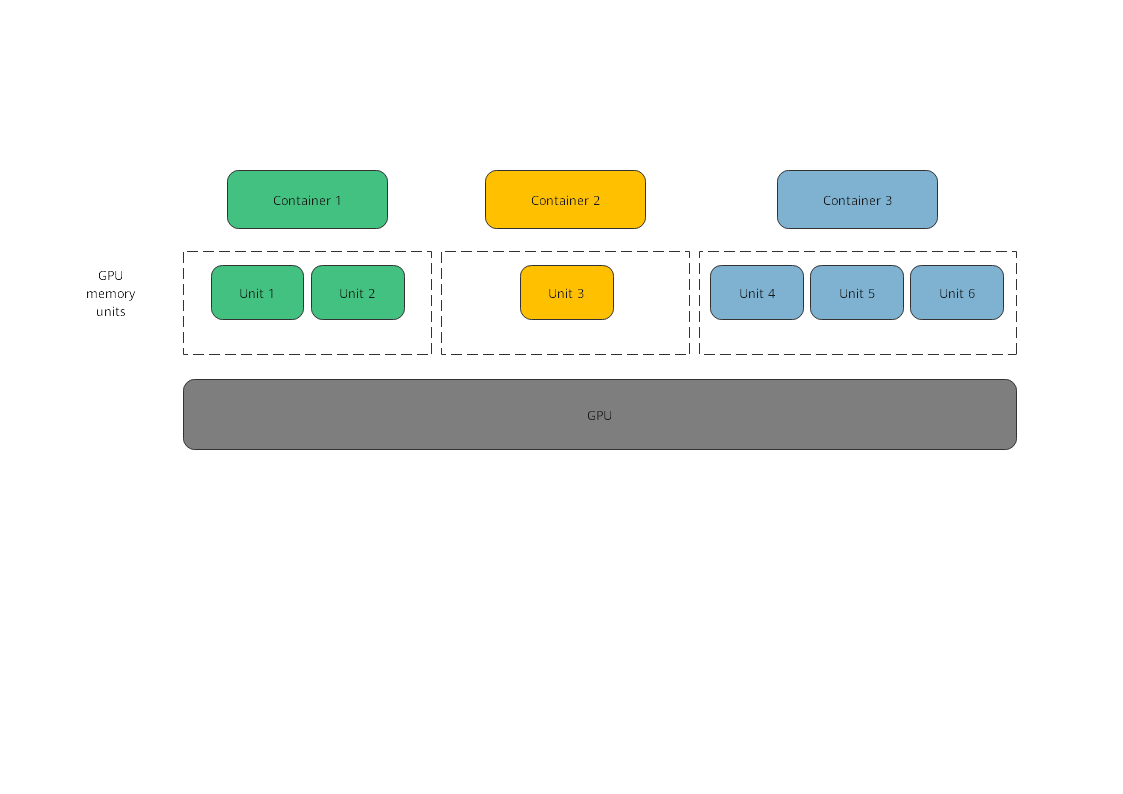
Fixed Scheduling (policy=1)
Fixed scheduling indicates that the GPU compute is allocated to containers based on a fixed percentage. For example, 5% of the GPU compute is allocated to container 1, and 15% of the GPU compute is allocated to container 2, as shown in the figure.
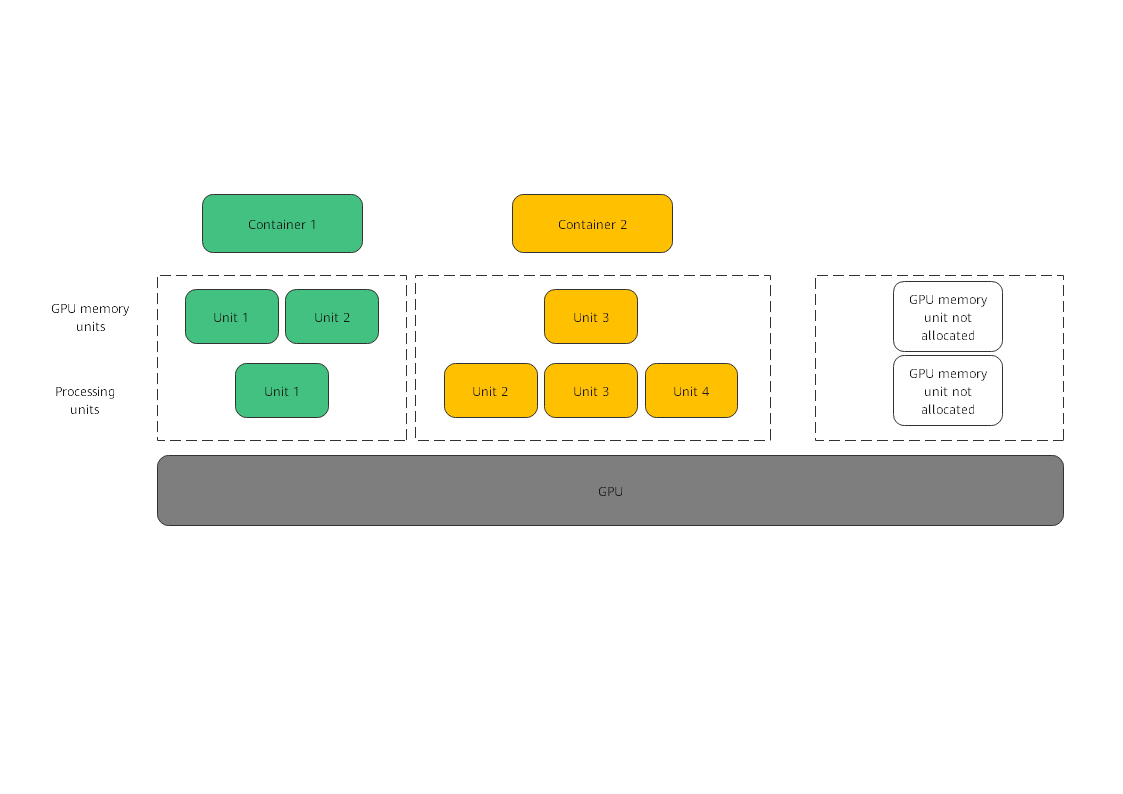
Average Scheduling (policy=2)
Average scheduling indicates that each container can have the same percentage of GPU compute (1/max_inst). For example, if max_inst is set to 20, each container obtains 5% of the GPU compute, as shown in the following figure.
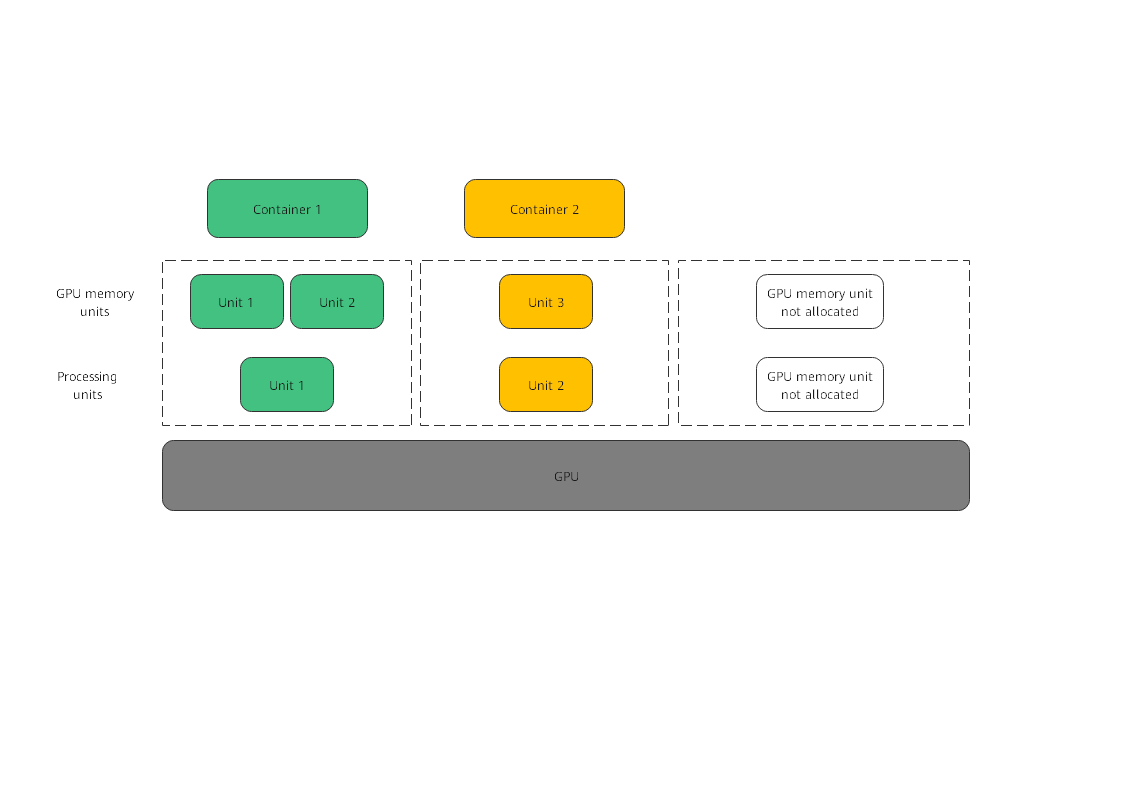
Preemptive Scheduling (policy=3)
Preemptive scheduling indicates that each container obtains one time slice, and xGPU starts scheduling from processing unit 1. However, if a processing unit is not allocated to a container or no process in the container is using the GPU, the processing unit will be skipped, and scheduling will start from the next slice. Processing units in gray are skipped and do not participate in scheduling.
In this example, containers 1, 2, and 3 each occupy 33.33% of the GPU compute.

Weight-based Preemptive Scheduling (policy=4)
Weight-based preemptive scheduling indicates that time slices are allocated to containers based on the GPU compute percentage of each container. xGPU starts scheduling from processing unit 1. However, if a processing unit is not allocated to a container, the processing unit will be skipped, and scheduling will start from the next slice. For example, if 5%, 5%, and 10% of the GPU compute is allocated to containers 1, 2, and 3, respectively, container 1 and container 2 each occupy 1 processing unit, and container 3 occupies 2 processing units. Processing units in gray are skipped and do not participate in scheduling.
In this example, containers 1, 2, and 3 occupy 25%, 25%, and 50% of the GPU compute, respectively.
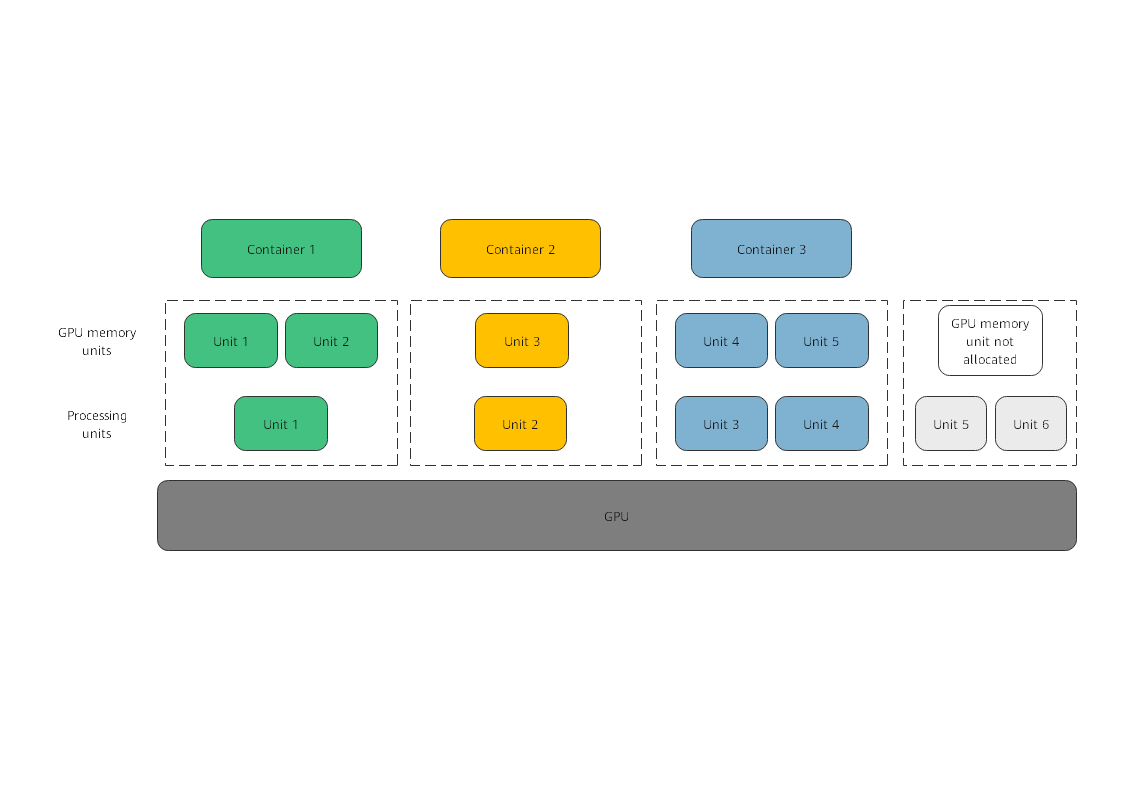
Hybrid Scheduling (policy=5)
Hybrid scheduling indicates that a single GPU supports the isolation of the GPU memory and the isolation of both the GPU compute and GPU memory. The isolation of both the GPU compute and GPU memory is the same as that of the fixed scheduling (policy=1). The containers with only GPU memory isolated share the remaining GPU compute after the GPU compute is allocated to the containers with both GPU compute and memory isolated. If max_inst is set to 20, containers 1 and 2 have both GPU compute and memory isolated, and 5% of the GPU compute is allocated to container 1 and 10% of the GPU compute is allocated to container 2. Containers 3 and 4 have only the GPU memory isolated. Because container 1 occupies one processing unit, container 2 occupies two processing units, containers 3 and 4 share the remaining 17 processing units. In addition, if no processes in container 2 are using the GPU, container 1 occupies one processing unit, container 2 occupies 0 processing units, and containers 3 and 4 share the remaining 19 processing units.
In hybrid scheduling, whether GPU compute isolation is enabled for containers is determined by whether GPU_CONTAINER_QUOTA_PERCENT is set to 0. All containers whose GPU_CONTAINER_QUOTA_PERCENT is 0 share the idle GPU compute.


The hybrid scheduling policy is not available for high-priority containers.
Weighted Scheduling (policy=6)
Weighted scheduling indicates that time slices are allocated to containers based on the percentage of the CPU compute of each container. Its compute isolation is not as good as that in weight-based preemptive scheduling. xGPU starts scheduling from processing unit 1. However, if a processing unit is not allocated to a container or no process in the container is using the GPU, the processing unit will be skipped, and scheduling will start from the next slice. For example, if 5%, 5%, and 10% of the GPU compute is allocated to containers 1, 2, and 3, respectively, container 1 and container 2 each occupy 1 processing unit, and container 3 occupies 2 processing units. In the following figure, processing units in white are idle and for container 3, and processing units in both white and gray are skipped and do not participate in scheduling.
In this example, containers 1, 2, and 3 occupy 50%, 50%, and 0% of the GPU compute, respectively.
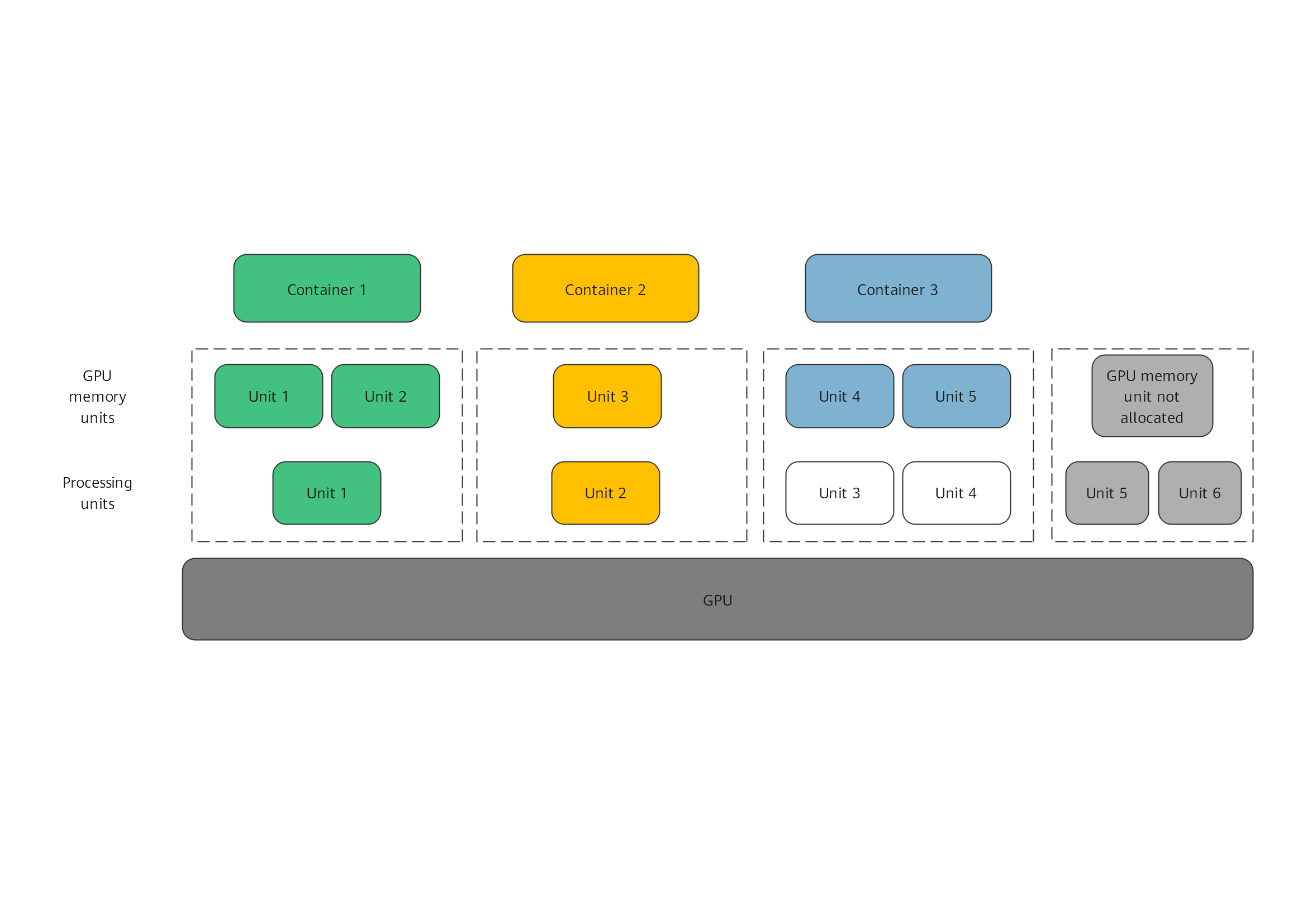

Weighted scheduling involves preemption of idle compute. When a container switches between idle and busy statuses, the compute of other containers is affected, and there will be compute fluctuation. When a container switches from the idle state to the busy state, the latency for the container to preempt the compute does not exceed 100 ms.
Feedback
Was this page helpful?
Provide feedbackThank you very much for your feedback. We will continue working to improve the documentation.See the reply and handling status in My Cloud VOC.
For any further questions, feel free to contact us through the chatbot.
Chatbot





